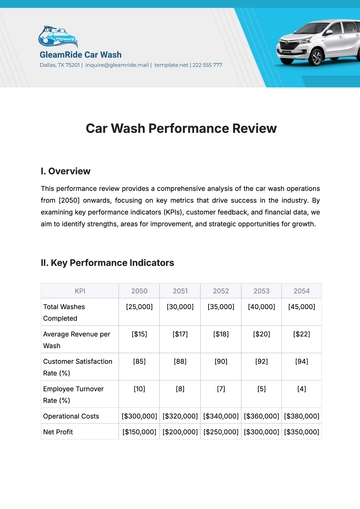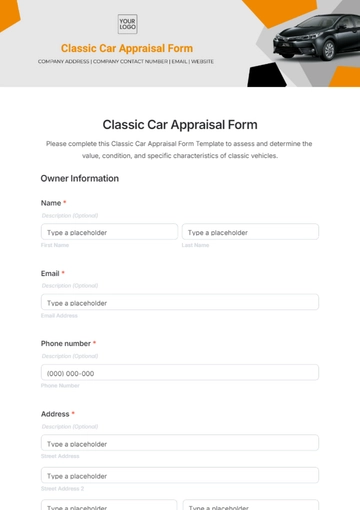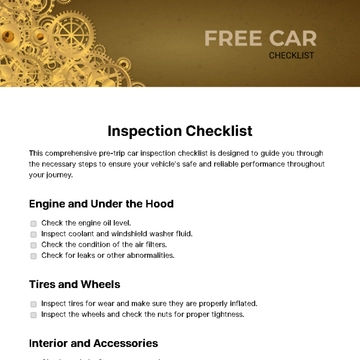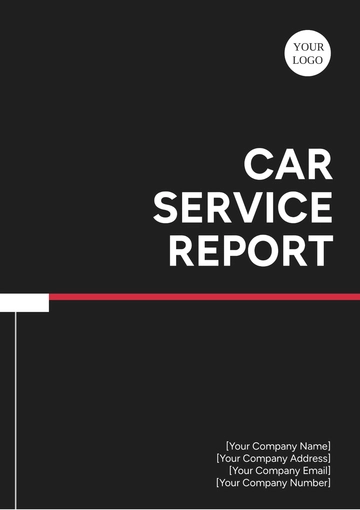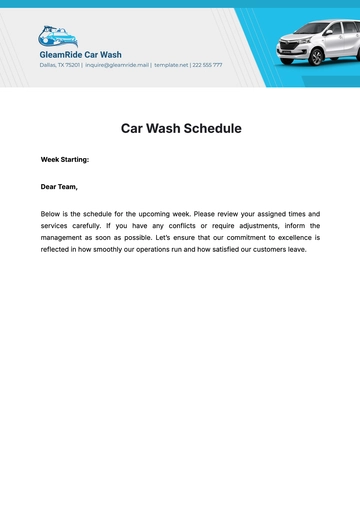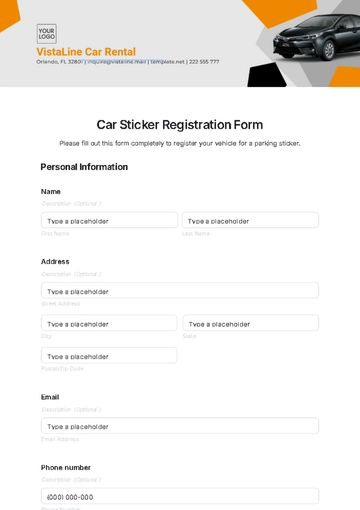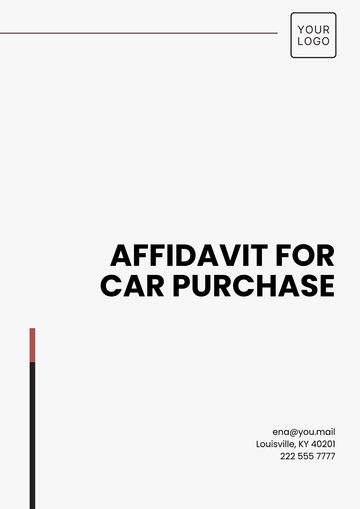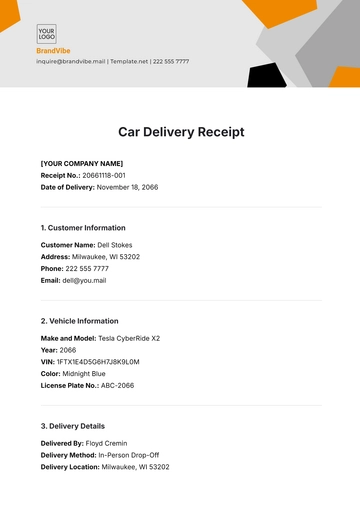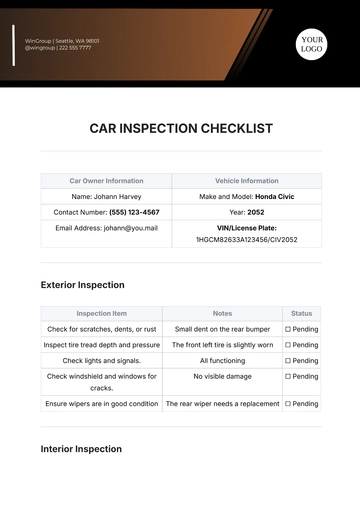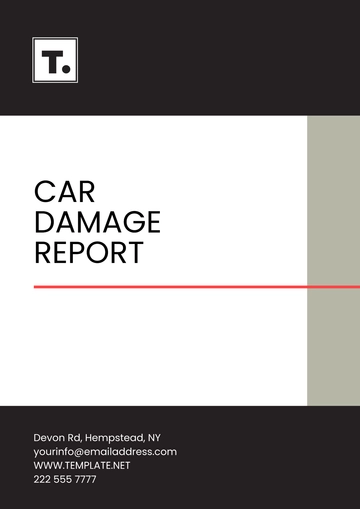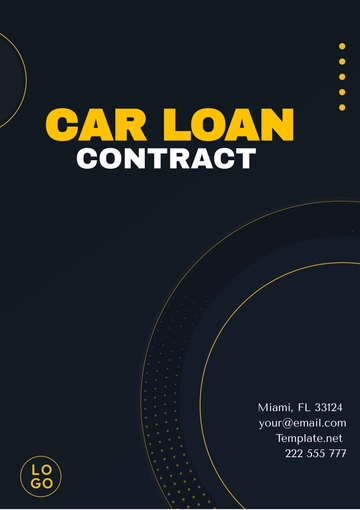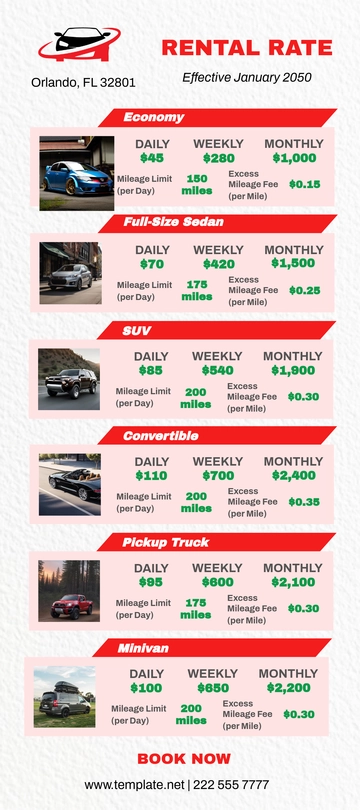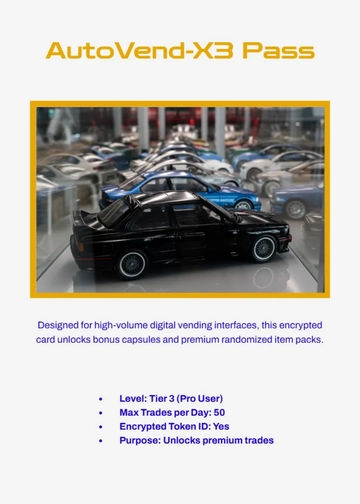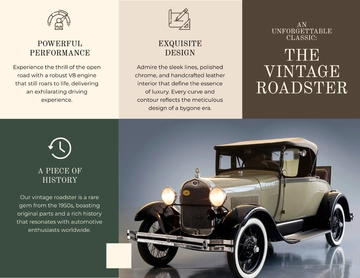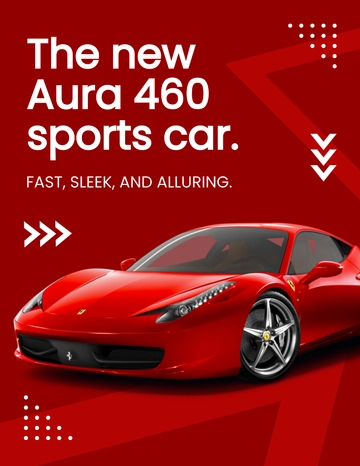Free Car Rental Yearly Strategy
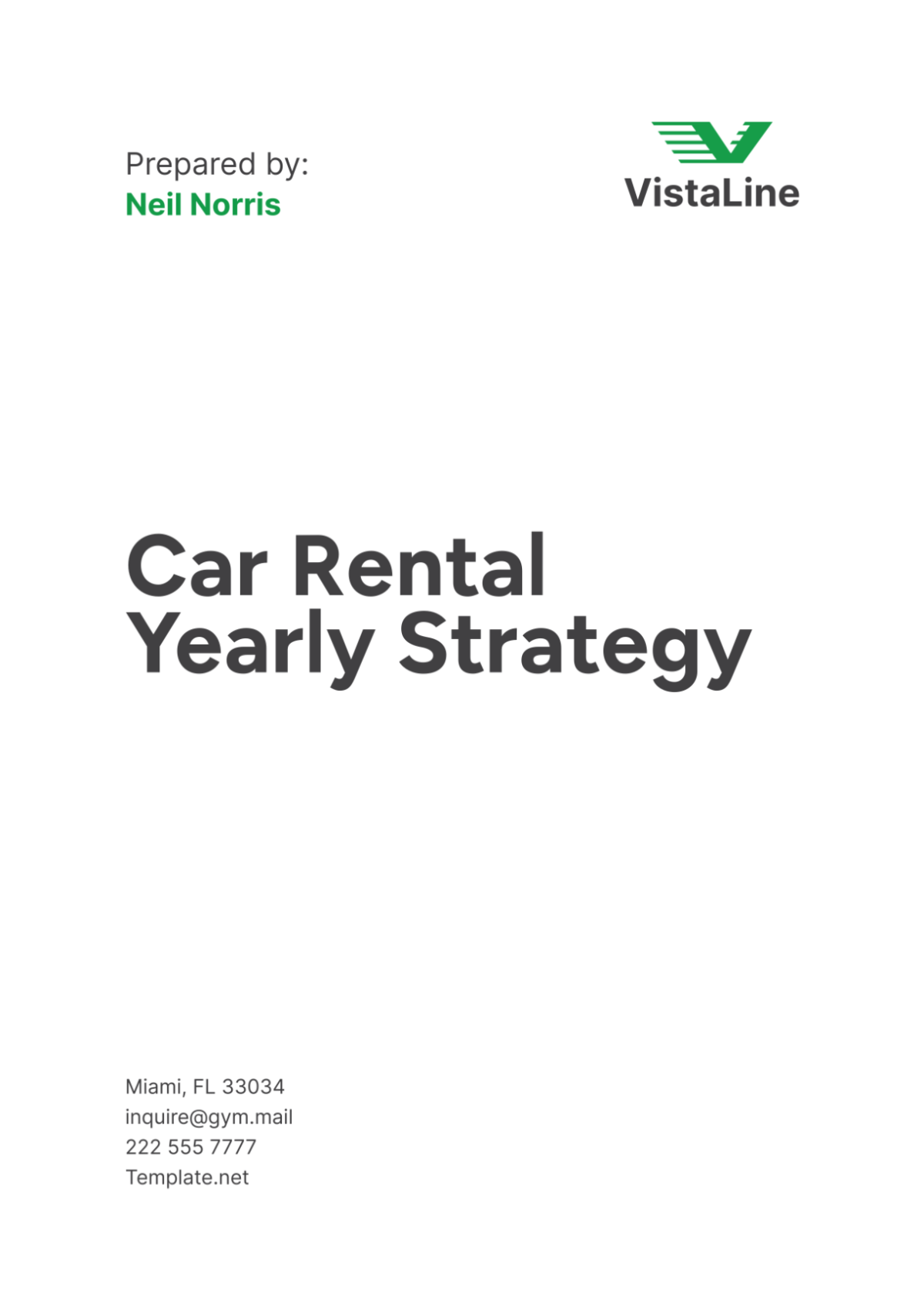
I. Executive Summary
A. Overview of the Car Rental Industry
The car rental industry is a vital segment of the transportation sector, providing individuals and businesses with convenient access to vehicles for short-term use. With the rise in tourism and increased demand for mobility solutions, the industry has experienced significant growth. In recent years, technology advancements and evolving consumer preferences have driven innovation, enhancing service delivery and customer satisfaction.
B. Mission and Vision Statements
Mission Statement: Our mission at [Your Company Name] is to offer reliable, affordable, and high-quality car rental services to our customers, ensuring a seamless and enjoyable travel experience.
Vision Statement: Our vision is to become the leading car rental company, recognized for our exceptional customer service, innovative solutions, and commitment to sustainability.
C. Summary of Key Goals and Objectives
Key Goals:
Expand our fleet to include a wider variety of vehicles.
Increase market share by 10% within the next year.
Enhance customer satisfaction ratings by improving service quality.
Objectives:
Launch a new mobile app to streamline the booking process.
Implement a comprehensive training program for staff to improve customer interactions.
Introduce eco-friendly vehicles to reduce our environmental footprint.
II. Market Analysis
A. Industry Trends
The car rental industry is influenced by several trends, including the growing popularity of ride-sharing services, advancements in vehicle technology, and increasing consumer preference for eco-friendly transportation options. The rise of electric and hybrid vehicles presents both opportunities and challenges for the industry, as companies must adapt to new technologies and infrastructure requirements.
B. Target Market Identification
Our primary target market includes business travelers, tourists, and local residents who need temporary transportation solutions. By segmenting our market based on demographics, geographic location, and travel behavior, we can tailor our services to meet the specific needs of each customer group.
C. Competitor Analysis
Competitor Landscape:
[Competitor 1]: Known for its extensive network and customer service.
[Competitor 2]: A global brand with a strong presence in major airports and cities.
[Competitor 3]: Offers a wide range of vehicles and innovative technology solutions.
Competitive Advantages of [Your Company Name]:
Superior customer service with personalized attention.
Competitive pricing and flexible rental options.
A diverse fleet includes luxury and eco-friendly vehicles.
D. SWOT Analysis
Strengths | Weaknesses |
|---|---|
Strong brand reputation | Limited geographic presence |
Diverse vehicle fleet | Dependence on seasonal demand |
High customer satisfaction | High operational costs |
Opportunities | Threats |
|---|---|
Expansion into new markets | Intense competition |
Adoption of new technologies | Economic downturns |
Partnerships with travel agencies | Regulatory changes |
III. Business Goals and Objectives
A. Short-Term Goals
Within the next 12 months, [Your Company Name] aims to increase our fleet size by 15%, enhance our online booking platform, and improve our customer loyalty program. We will focus on operational efficiency and cost management to achieve these goals.
B. Long-Term Goals
Over the next five years, our long-term goals include expanding our market presence internationally, becoming a leader in sustainable car rentals, and achieving a 25% increase in revenue. We plan to invest in electric and hybrid vehicles and develop partnerships with key industry players.
C. Key Performance Indicators (KPIs)
To measure our progress, we will track the following KPIs:
Fleet Utilization Rate: Targeting a 90% utilization rate.
Customer Satisfaction Score: Aiming for an average score of 4.5 out of 5.
Revenue Growth: Seeking a 10% annual increase in revenue.
Employee Training Completion: Ensuring 100% staff completion of training programs.
IV. Marketing Strategy
A. Branding and Positioning
At [Your Company Name], our brand is synonymous with reliability, quality, and customer-centricity. We position ourselves as a premium car rental service provider, emphasizing our commitment to excellence and customer satisfaction. Our branding strategy involves consistent messaging across all channels, a strong visual identity, and active engagement with our target audience.
B. Marketing Channels
We will utilize a mix of digital and traditional marketing channels to reach our target market. Our digital marketing efforts will focus on search engine optimization (SEO), pay-per-click (PPC) advertising, social media marketing, and email campaigns. Traditional channels will include print advertisements in travel magazines, billboards, and partnerships with travel agencies.
C. Promotional Campaigns
To drive awareness and increase bookings, we will launch several promotional campaigns throughout the year. These will include seasonal discounts, loyalty rewards for repeat customers, and referral bonuses. We will also collaborate with airlines and hotels to offer bundled packages that provide added value to our customers.
D. Customer Retention Programs
Customer retention is a key focus area for [Your Company Name]. We will implement a comprehensive loyalty program that offers exclusive benefits, such as free upgrades, early access to promotions, and priority service. Additionally, we will actively seek customer feedback and use it to continuously improve our services.
V. Operations Plan
A. Fleet Management
Fleet Acquisition
To meet the growing demand and ensure a diverse selection of vehicles, [Your Company Name] will invest in acquiring new vehicles. Our acquisition strategy includes purchasing a mix of economy, luxury, and eco-friendly vehicles to cater to various customer preferences. We will also explore leasing options to maintain flexibility and manage costs effectively.
Maintenance and Repairs
Maintaining our fleet in excellent condition is critical to our success. We will establish a rigorous maintenance schedule, conduct regular inspections, and partner with reputable service providers for repairs. Our goal is to minimize downtime and ensure the safety and reliability of our vehicles.
Disposal and Replacement Strategy
To keep our fleet modern and appealing, we will implement a disposal and replacement strategy. Vehicles that reach a certain age or mileage threshold will be phased out and replaced with newer models. This approach ensures that we offer our customers the latest in vehicle technology and comfort.
B. Location and Facilities
Expanding our geographic presence is a priority for [Your Company Name]. We will identify high-demand locations for new branches and invest in state-of-the-art facilities to enhance the customer experience. Each location will be equipped with modern amenities, efficient systems, and trained staff to provide top-notch service.
C. Staffing and Training
Our employees are our greatest asset. To ensure they provide exceptional service, we will implement comprehensive training programs that cover customer service, vehicle maintenance, and safety protocols. We will also establish a performance management system to reward excellence and address areas for improvement.
D. Technology and Software Integration
Technology plays a crucial role in our operations. We will invest in advanced software solutions for booking management, fleet tracking, and customer relationship management (CRM). These tools will streamline our processes, improve efficiency, and provide valuable insights for decision-making.
VI. Financial Plan
A. Budget Allocation
Effective budget allocation is essential to achieve our strategic goals. We will allocate funds across key areas, including fleet acquisition, marketing, technology, and staff training. A detailed budget plan will ensure that resources are used efficiently and that we remain on track to meet our financial objectives.
Category | Budget Allocation |
|---|---|
Fleet Acquisition | $5,000,000 |
Marketing | $1,500,000 |
Technology Integration | $1,000,000 |
Staff Training | $500,000 |
Maintenance and Repairs | $800,000 |
Miscellaneous | $200,000 |
B. Revenue Projections
Our revenue projections are based on market trends, historical data, and strategic initiatives. We anticipate a 10% annual increase in revenue, driven by fleet expansion, enhanced marketing efforts, and improved customer retention. Detailed revenue projections will help us track our financial performance and make informed decisions.
Year | Projected Revenue |
|---|---|
Year 1 | $15,000,000 |
Year 2 | $16,500,000 |
Year 3 | $18,150,000 |
Year 4 | $19,965,000 |
Year 5 | $21,961,500 |
C. Cost Management
Managing costs effectively is crucial for profitability. We will implement cost-saving measures, such as negotiating favorable terms with suppliers, optimizing our maintenance processes, and leveraging technology to improve operational efficiency. Regular financial reviews will help us identify areas for improvement and ensure that we stay within budget.
D. Profitability Analysis
Our profitability analysis will assess the impact of our strategies on our bottom line. By tracking key financial metrics, such as gross profit margin, net profit margin, and return on investment (ROI), we can evaluate our performance and make necessary adjustments to achieve our financial goals.
VII. Customer Service Strategy
At [Your Company Name], we prioritize delivering exceptional customer service to enhance the overall rental experience. Our customer service strategy focuses on several key areas to ensure satisfaction and loyalty among our clients.'
A. Customer Experience Improvement
We are committed to improving every touchpoint of the customer journey. This includes:
Streamlined Booking Process: Enhancing our website and mobile app for intuitive navigation and easy booking.
Personalized Service: Tailoring recommendations based on customer preferences and past interactions.
Quick Response Times: Promptly addressing inquiries and reservations to minimize wait times and enhance convenience.
B. Feedback and Complaint Resolution
Feedback is invaluable in refining our services. We will:
Implement Feedback Loops: Regularly solicit feedback through surveys, reviews, and direct customer interactions.
Resolve Issues Proactively: Addressing complaints swiftly and effectively to demonstrate responsiveness and commitment to customer satisfaction.
Continuous Improvement: Using feedback to identify trends and areas for enhancement across all service touchpoints.
C. Loyalty Programs
Our loyalty program aims to reward and retain our valued customers:
Tiered Rewards System: Offering exclusive benefits such as discounts, upgrades, and priority service based on rental frequency and loyalty.
Special Offers and Promotions: Tailoring promotions to reward loyal customers and encourage repeat business.
Personalized Communication: Providing personalized offers and communications to enhance engagement and loyalty.
D. Service Standards and Protocols
Maintaining consistent service excellence is key to our operations:
Training and Development: Continuous training programs for staff to uphold service standards and improve skills.
Quality Assurance: Regular audits and evaluations to ensure adherence to service protocols and customer satisfaction metrics.
Customer-centric Approach: Empowering staff to go above and beyond in meeting customer expectations and resolving issues effectively.
VIII. Risk Management
A. Risk Identification and Assessment
Identifying potential risks allows us to proactively mitigate challenges:
Market Risks: Fluctuations in demand, economic conditions, and competitive pressures.
Operational Risks: Vehicle maintenance issues, supply chain disruptions, and technological failures.
Legal and Regulatory Risks: Compliance with local and international regulations impacting operations.
B. Mitigation Strategies
Implementing strategies to minimize risks and ensure business continuity:
Diversification: Expanding into new markets and customer segments to reduce dependency on specific markets.
Insurance Coverage: Comprehensive insurance policies covering fleet, liability, and business interruption.
Contingency Planning: Developing contingency plans for emergencies and unforeseen events to minimize disruptions.
C. Insurance Coverage
[Your Company Name] maintains robust insurance coverage to protect against potential liabilities:
Vehicle Insurance: Comprehensive coverage for all vehicles in our fleet against damage and theft.
Liability Insurance: Protection against third-party claims arising from accidents or property damage.
Business Interruption Insurance: Coverage for losses due to unexpected disruptions impacting operations.
D. Contingency Planning
Preparing for contingencies ensures we can respond effectively to unforeseen events:
Emergency Response Protocols: Establishing clear protocols for staff to follow in emergencies.
Backup Systems: Implementing redundant systems for critical operations such as booking and customer support.
Communication Plans: Maintaining open lines of communication with customers and stakeholders during crises.
IX. Sustainability and Corporate Social Responsibility (CSR)
A. Environmental Initiatives
[Your Company Name] is committed to reducing our environmental footprint:
Fleet Optimization: Introducing hybrid and electric vehicles to promote energy efficiency and reduce emissions.
Fuel Efficiency Programs: Implementing fuel-efficient driving practices and technologies to minimize environmental impact.
Carbon Offsetting: Partnering with organizations to offset carbon emissions generated by our operations.
B. Community Engagement
Engaging with local communities to foster positive relationships and support initiatives:
Community Partnerships: Collaborating with local charities and organizations on community projects and events.
Employee Volunteerism: Encouraging staff participation in community service activities to give back and strengthen community ties.
Sponsorship and Donations: Contributing to local causes and events that align with our values and benefit the community.
C. Sustainable Practices
Incorporating sustainable practices into our daily operations:
Resource Conservation: Implementing recycling programs and reducing waste generation across our facilities.
Energy Efficiency: Adopting energy-saving technologies and practices to minimize energy consumption.
Supplier Sustainability: Partnering with suppliers who share our commitment to environmental stewardship and ethical practices.
D. Reporting and Transparency
Maintaining transparency in our sustainability efforts and reporting progress:
Annual Sustainability Reports: Publishing reports to stakeholders detailing our environmental initiatives, achievements, and goals.
Stakeholder Engagement: Soliciting feedback from stakeholders and integrating their input into our sustainability strategies.
Continuous Improvement: Setting ambitious sustainability targets and regularly reviewing our performance to drive continuous improvement.
X. Implementation Plan
A. Action Plan and Timeline
Our implementation plan outlines specific actions and timelines for achieving our strategic objectives:
Phase | Timeline | Focus Areas |
|---|---|---|
Phase 1 | Year 1 | Focus on fleet expansion and customer service enhancements. |
Phase 2 | Years 2-3 | Roll out new technology solutions and expand market reach. |
Phase 3 | Years 4-5 | Consolidate market position and pursue sustainable growth initiatives. |
B. Resource Allocation
Allocating resources effectively to support implementation efforts:
Financial Resources: Budgeting for capital investments, marketing campaigns, and operational improvements.
Human Capital: Assigning roles and responsibilities, and providing training and development opportunities for staff.
Technological Infrastructure: Investing in IT systems, software, and infrastructure upgrades to support growth and efficiency.
C. Monitoring and Evaluation
Monitoring progress and evaluating performance against key milestones and KPIs:
Performance Metrics: Tracking KPIs related to revenue growth, customer satisfaction, and operational efficiency.
Regular Reviews: Conducting quarterly reviews to assess progress, identify challenges, and make necessary adjustments.
Feedback Mechanisms: Soliciting feedback from internal stakeholders, customers, and external partners to inform decision-making.
D. Adjustments and Continuous Improvement
Remaining agile and responsive to market dynamics and emerging trends:
Agility: Anticipating and adapting to changes in customer preferences, regulatory requirements, and competitive landscape.
Innovation: Encouraging a culture of innovation to drive product and service enhancements.
Continuous Learning: Learning from successes and challenges to refine strategies and improve performance.
XI. Conclusion
A. Recap of Key Strategies and Goals
[Your Company Name] is poised to achieve sustainable growth and leadership in the car rental industry by focusing on customer-centric service, operational excellence, and environmental stewardship. Our comprehensive strategy encompasses strategic goals, robust risk management, sustainability initiatives, and a clear implementation roadmap.
B. Call to Action
We are committed to delivering exceptional value and experiences to our customers while contributing positively to our communities and the environment. By executing our strategic plan with diligence and innovation, we aim to exceed expectations and become the preferred choice for car rentals globally.
C. Final Thoughts and Future Outlook
Looking ahead, [Your Company Name] will continue to innovate, adapt to market changes, and uphold our commitment to excellence. We are confident that our strategic initiatives will drive sustainable growth, strengthen our competitive position, and create long-term value for all stakeholders.
- 100% Customizable, free editor
- Access 1 Million+ Templates, photo’s & graphics
- Download or share as a template
- Click and replace photos, graphics, text, backgrounds
- Resize, crop, AI write & more
- Access advanced editor
Develop a comprehensive annual strategy with Template.net's customizable and editable Car Rental Yearly Strategy Template. Utilize the AI Editor Tool to outline your yearly goals and initiatives. This user-friendly template ensures effective planning and execution of long-term strategies, enhancing business growth and operational efficiency.
